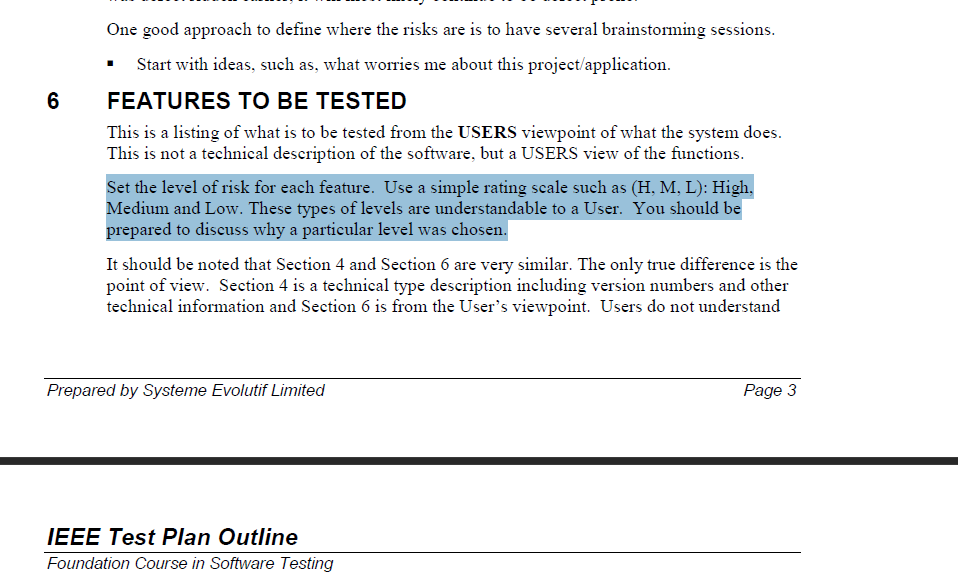According to IEEE 829 format for Test Plan, under the section "6. Features to be tested" it has been stated that- "Set the level of risk for each feature. Use a simple rating scale such as (H, M, L): High, Medium and Low. These types of levels are understandable to a User. You should be prepared to discuss why a particular level was chosen." I am confused about these levels of risk! Does this indicate how much risk is there if we don't test it? Or how much risk there to test it without finding any bugs? I mean, I couldn't get any clear answer about the definition of "level of risk" in this context(IEEE format).
-
Or how much risk there to test it without bugs? what does that means ?– PDHideCommented Apr 10, 2020 at 7:37
-
Level of risk is usually the cumulative outcome of the criticality of the feature and risk involved if the feature breaks.– PDHideCommented Apr 10, 2020 at 7:39
-
@PDHide, sorry for that sentence. I meant to say, is level of risks indicating how much risk there will be to test the feature without finding any bugs!? My question sounds a bit silly now after your answer! Your answer is really helpful and clear. Thank you.– Ishmam shahirCommented Apr 10, 2020 at 7:57
-
1Ok i think you are trying to say "The difficulty in testing the feature"– PDHideCommented Apr 10, 2020 at 7:58
-
1Thank you for answering my silly things! ^_^– Ishmam shahirCommented Apr 10, 2020 at 8:04
1 Answer
Risk is the possibility of a bad experience for someone who matters.
"who matters" may include users, sponsors, developers, testers, managers, regulatory agents, etc, etc, etc.
"bad experience" may include direct usage of the product, indirect consequences of its usage, even consequences of the existence of the product/feature itself, even if no one uses it / before going to production.
Testing doesn't influence risk. Testing is an activity to better understand risks.
For more details, I would suggest watching James Bach's talk on Risk Analysis.
The sizing described in the document is simply a comparative scale: The " people who matter" have certain perspectives of risk that serve to group particular instances (bad experiences possibilities) in High, Medium, and Low impact. You have to instantiate this scale is your context, by creating a shared understanding of people's opinion. It's a dynamic process because people change and new knowledge is added every day.
